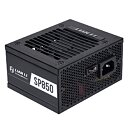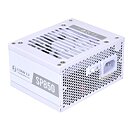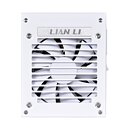- Joined
- Oct 9, 2007
- Messages
- 47,878 (7.38/day)
- Location
- Dublin, Ireland
| System Name | RBMK-1000 |
|---|---|
| Processor | AMD Ryzen 7 5700G |
| Motherboard | Gigabyte B550 AORUS Elite V2 |
| Cooling | DeepCool Gammax L240 V2 |
| Memory | 2x 16GB DDR4-3200 |
| Video Card(s) | Galax RTX 4070 Ti EX |
| Storage | Samsung 990 1TB |
| Display(s) | BenQ 1440p 60 Hz 27-inch |
| Case | Corsair Carbide 100R |
| Audio Device(s) | ASUS SupremeFX S1220A |
| Power Supply | Cooler Master MWE Gold 650W |
| Mouse | ASUS ROG Strix Impact |
| Keyboard | Gamdias Hermes E2 |
| Software | Windows 11 Pro |
Lian Li unveiled the SP850, the first SFX form-factor power supply featuring ATX 3.0 specs readiness, and PCIe Gen 5 compliance, including a 12+4 pin ATX12HPWR connector for next-generation graphics cards. Available in black and white body-color variants, the it offers 850 W continuous output, including tolerance for +100% excursions for at least 100 µs intervals. and meets 80 Plus Gold efficiency. It features a single +12 V rail design, with most common electrical protections. The 92 mm fluid dynamic bearing fan keeping it cool offers fanless (zero RPM) cooling up to 340 W load (excluding excursions). The Lian Li SP850 offers full modular cabling. Besides the 12+4 pin ATXHPWR, you get two 8-pin EPS, and three 6+2 pin PCIe power connectors. Peripheral connectivity includes eight SATA power connectors. Lian Li is backing the SP850 with a 5-year warranty. Available now, it is priced at USD $150-170.





View at TechPowerUp Main Site





View at TechPowerUp Main Site







